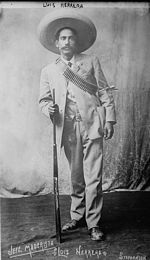Luís Herrera
In late 1915 the Constitutionalist Luís Herrera, General Jefe of the Brigada ‘Benito Juárez’, was isolated from other Carrancista forces and needed to improvise paper currency to pay his troops until he met up with the forces under J. B. Treviño. Since he had captured a batch of $80,000 of Riveros’ notes, he reused themAGN, Fondo Gobernación Periodo Revolucionario, caja 6, exp. 19, folletos 5 and on 29 November, in Parral, southern Chihuahua, included them in a list of issues that were legal tender, provided that they had been revalidated with the Brigade seal and the signature of either himself or Coronel R. Dominguez, his chief of staff (Jefe de Estado Mayor)AMPar, Gobierno, Jefatura Política y Presidencia Municipal, Correspondencia, caja 71, exp 2.
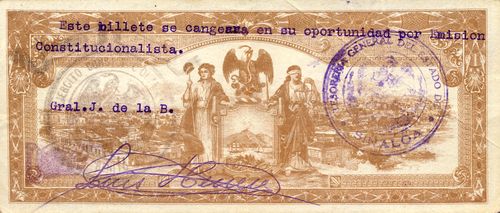
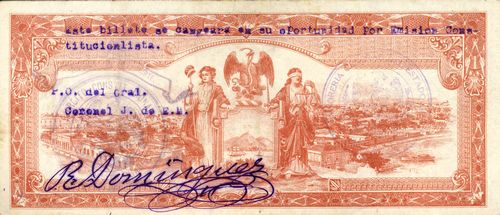
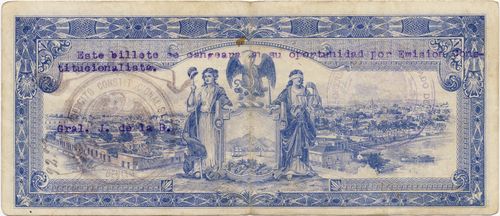


50c notes are known with, in addition to the Tesorería seal, a small circular resello of EJERCITO CONSTITUCIONALISTA BRIGADA BENITO JUAREZ' around an eagle and a large circular resello of DIVISION NORTE / EJERCITO CONSTITUCIONALISTA BRIGADA JUAREZ' around an eagle. There was no message or signature, presumably because they lacked the space or time.
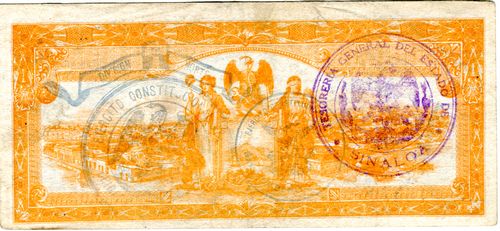
On 12 January 1916 Carranza, in Querétaro, wired to Sub-secretary Nieto in Mexico, in response to a message from Governor Ignacio C. Enríquez, that he should order funds to be sent to exchange the currency revalidated by Herrera and that all notes issued by Villista faction should be declared null and voidCEHM, Fondo XXI-4, telegram Carranza, Querétaro to Nieto, México, 12 January 1916.
By April 1916 merchants in Parral were asking for these notes to be exchanged. A report was sent to the Secretaría de Hacienda, who replied to the governor of Chihuahua, C. Enríquez, that the notes of all the issues authorized by Carranza had to be handed in to the Jefaturas de Haciendas and Administraciones Principales de Timbre.
Known numbers are:
| Series | Lowest number |
Highest number |
||
| 50c | A | 15713 | 17083 | resellos |
| $1 | A | 1839 | 1973 | handwritten |
| 2561 | 10949 | typewritten | ||
| $5 | A | 4142 | typewritten | |
| $10 | A | 1664 | 7657 | typewritten |
| B | 12199 | handwritten | ||
| 12130 | 17121 | typewritten | ||
| C | 20077 | 20353 | typewritten | |
| 21979 | handwritten |

